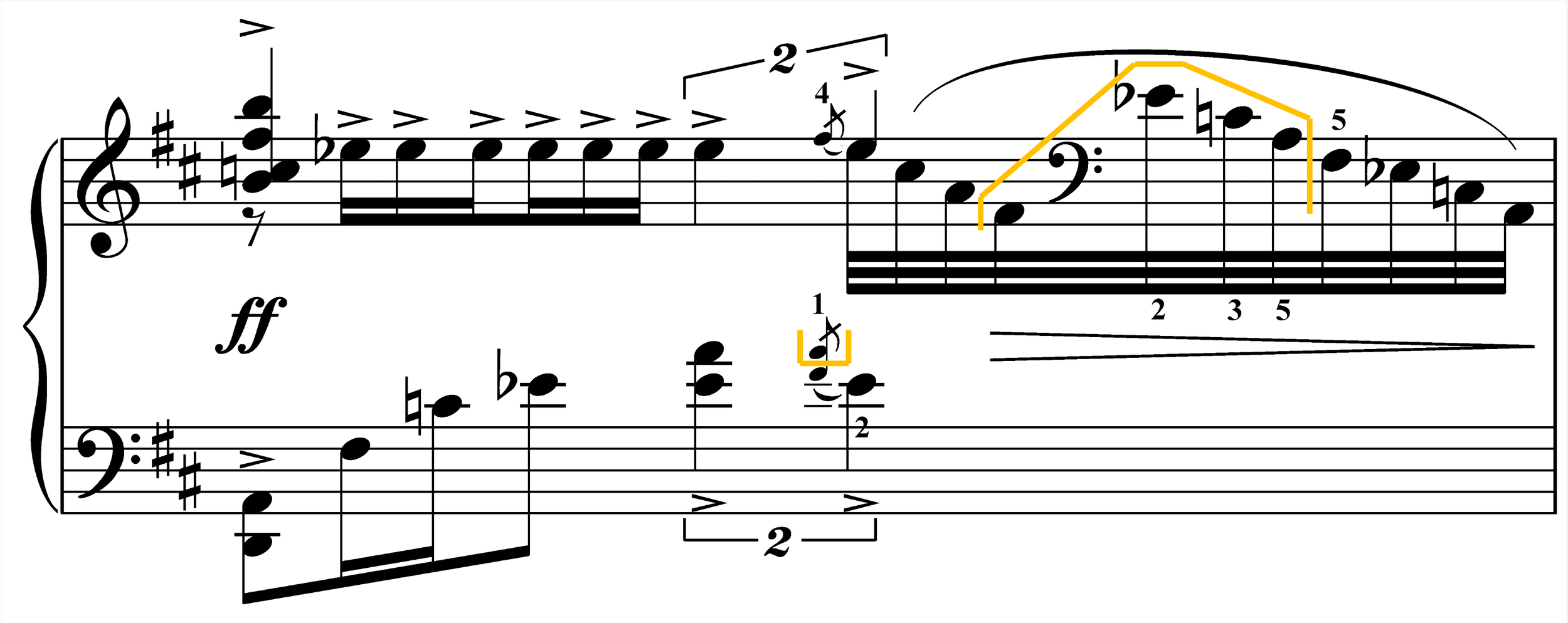SPECIAL COLLECTION | Dorothy Brandwein’s Ravel Fingerings
Published on 4/26/2022 with the author’s permission
First appeared in Dorothy Woster Brandwein, "Divisi Fingering in Selected Passages from Ravel's Solo Piano Works" (DMA diss., University of Missouri–Kansas City, 1981), 65, 88.
64: “The monotony of the dissonance which envelops the melody in the measures of the next example (Example 50) can more easily be controlled when the left hand plays the lowest interval of the sonority.”
88, fn7: "The pianist may divide the chord as shown, whenever possible, for better color and tonal balance."


















